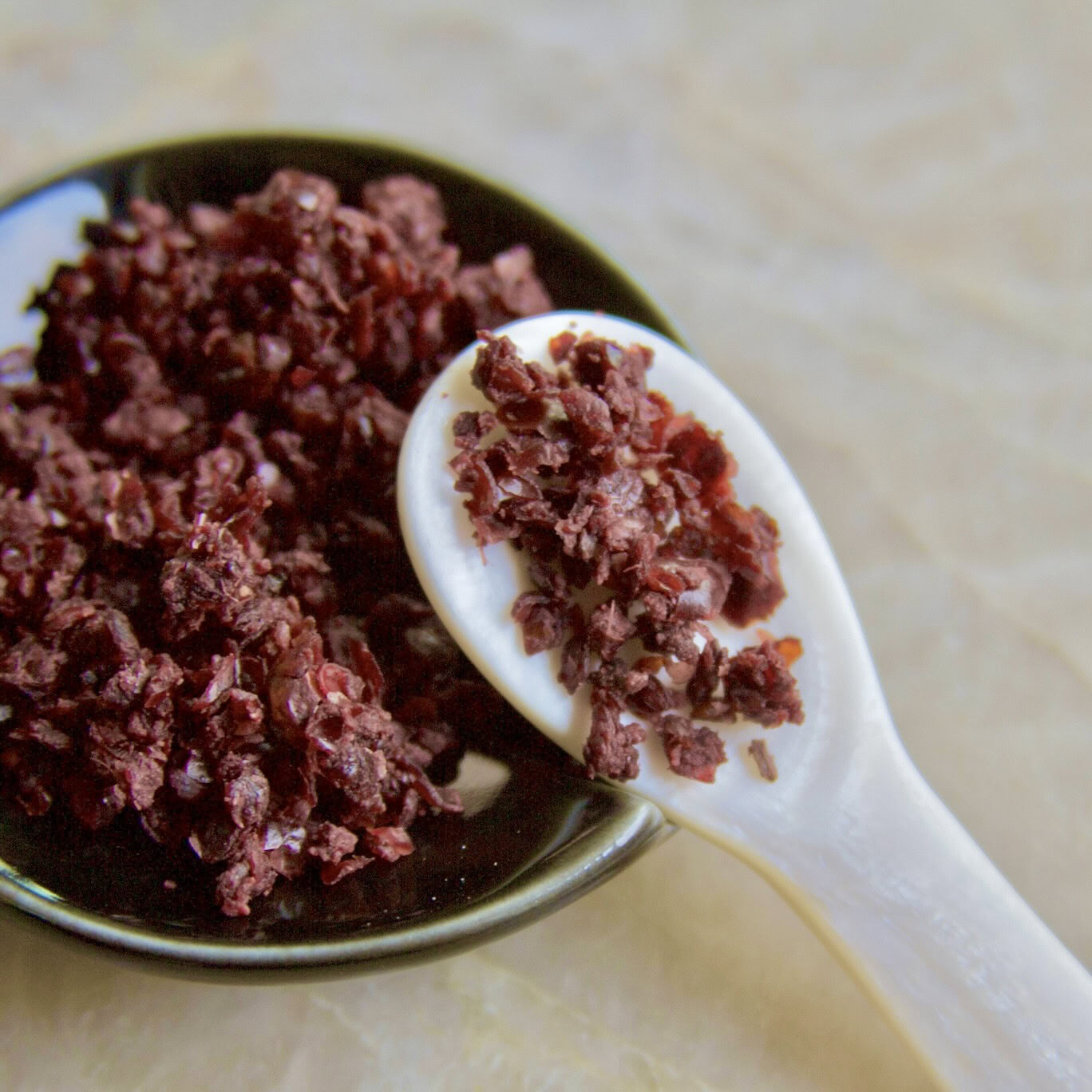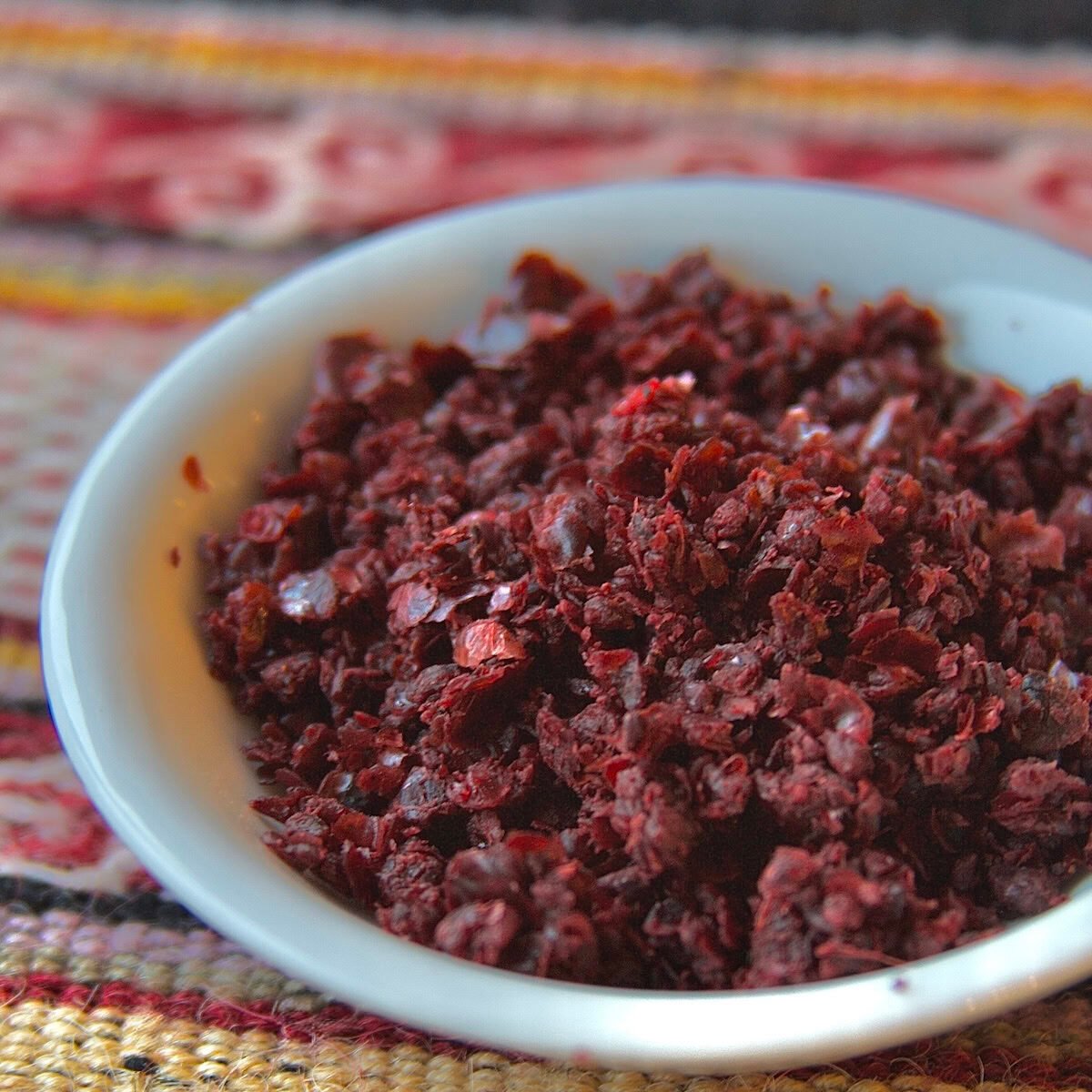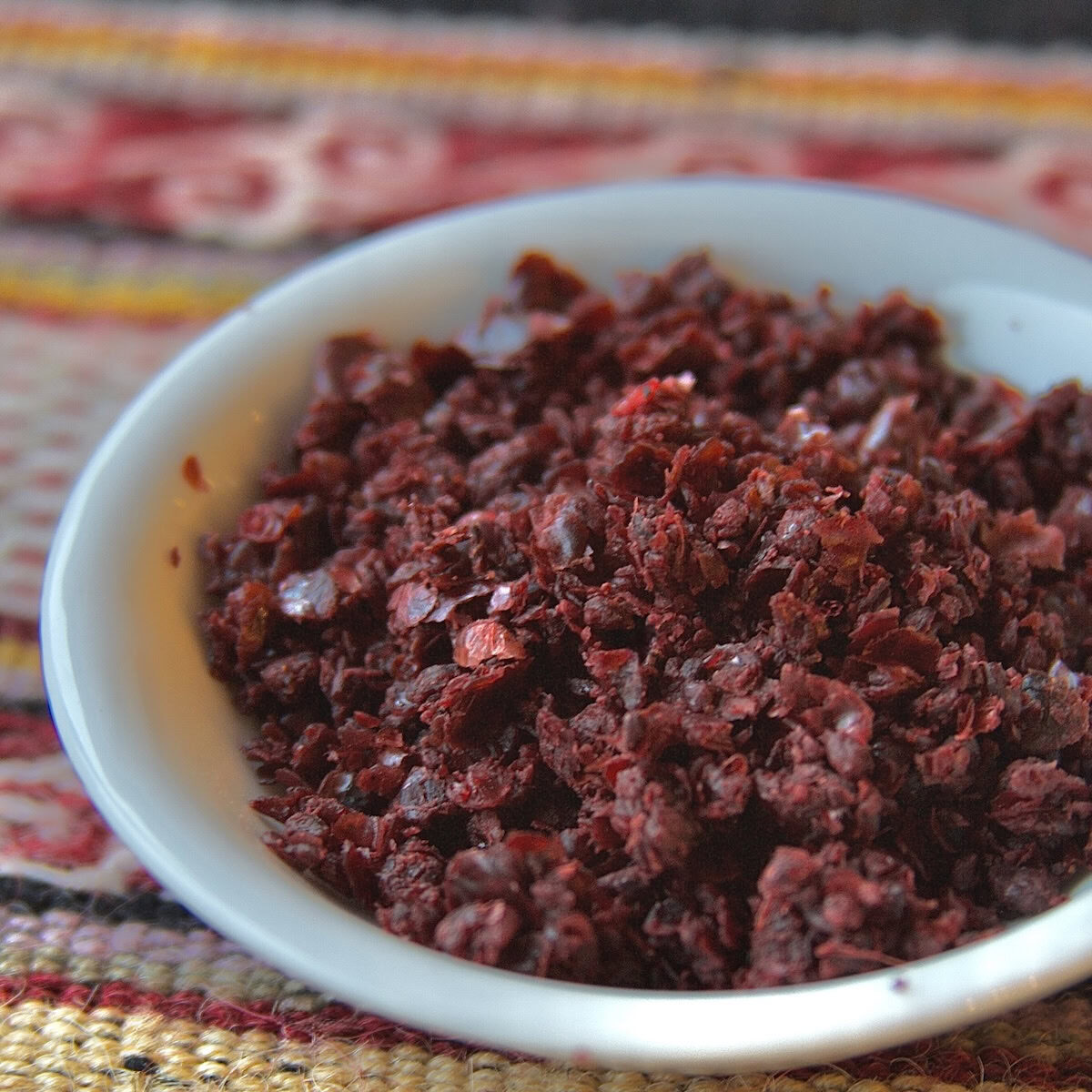Sumac
Sumac is the spice produced primarily from the fruit of Rhus coriaria, a deciduous shrub in the cashew family. Other sumac species are cultivated on a much smaller scale, like Rhus glabra and Rhus typhina.

REGION OF ORIGIN
Sumac comes from the Eastern Mediterranean and Middle East, including parts of present-day Turkey, Iran, and Syria. This is where the wild ancestors of Rhus coriaria are found and where the spice has the richest history of use.
PART & COLOR
Sumac "berries" are actually small fruits. They are a vibrant red to deep crimson on the plant, but turn a rich burgundy to dark, reddish purple when dried and ground. This is the definitive color of the spice. As you can see, the texture of properly prepared sumac is coarse and slightly oily to the touch. Fine powders are typically lower in quality. They tend to be overly dried and thus stripped of essential oils.
HARVEST
Rhus coriaria flowers in the spring and the berries ripen in the late summer to early fall. They’re ready for harvest when they’re fully ripe and deep red, signaling a high concentration of acidity and essential oils. Farmers carefully cut entire berry clusters off the branches by hand, which are then dried until they become brittle enough to be ground. The stems and the hard, bitter seeds are removed prior to the grinding process.

FLAVOR & AROMA PROFILE
Sumac is a special spice. It’s so unique. The initial impression is an inviting, tangy scent, but the real experience happens on the tongue. It’s an explosion of tart, lemony goodness with notes of fresh berries, cherries, and grapefruit zest. Its tartness cannot be overstated, and that’s what makes it so delicious. At first, it’s exciting and bold, then its sharp acidity tapers off with a slightly astringent aftertaste that feels crisp and refreshing. Sumac is a lively spice.
This singular flavor profile comes from the berries’ rich composition of acids and tannins, which allow sumac to impart a tangy zing without the moisture of citrus juice—extremely valuable.
CULINARY USES
In Middle Eastern, Mediterranean, and North African cuisines, sumac seasons grilled meats, fish, and vegetables. It’s especially excellent in marinades because its natural acidity tenderizes the meat. The citrus notes help balance the richness of chicken, lamb, or beef while elevating their savory notes. Sumac is often sprinkled as a finishing touch on hummus and yogurt dips as it complements their creaminess. It’s also a key ingredient in the beloved spice blend za’atar, which often gets dusted over flatbreads, salads, and roasted meats.
Sumac works really well in salads too. Mix it in with onions, tomatoes, potatoes, and cucumbers.


